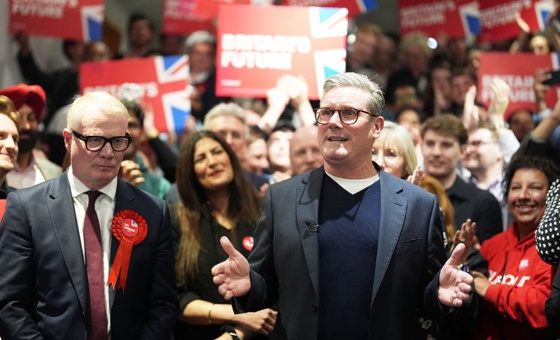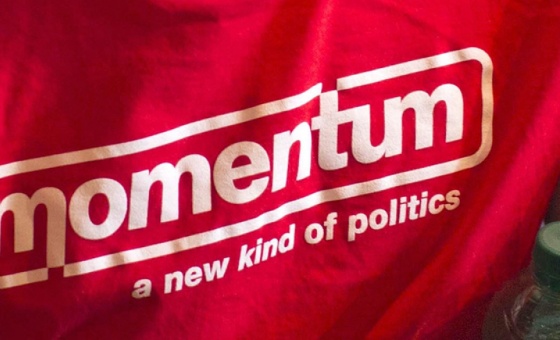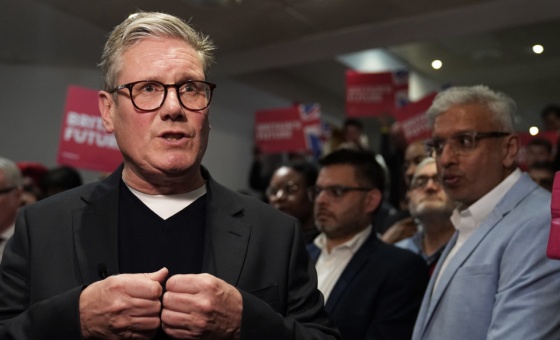This is the last article you can read this month
You can read more article this month
You can read more articles this month
Sorry your limit is up for this month
Reset on:
Please help support the Morning Star by subscribing here
THE Tories’ planned immigration restrictions are a thinly veiled attempt at divide and rule.
Does anyone truly believe that a government of millionaires, opposed to unions and workers’ rights, is suddenly motivated by a burning ambition to improve our pay and living standards? That Jacob Rees-Mogg wants a better life for them below stairs?
The labour movement ought to be united in opposing the scapegoating plan.
That depends on getting the arguments right. The case cannot be: we need a continuing supply of cheap labour to keep the economy going or to provide social care on zero-hours contracts and less than minimum wage.
That is the argument of the privateers running social care, of the big farmers stuffed with subsidies, and of most of business.
It is the argument of those who hire au pairs and nannies. It cannot possibly be the position of the left.
Nor can that be to give any credence to the Tory government that its policy will bring a high-wage, high-skill economy.
It is the level of investment that is crucial to achieving such a thing. In turn, public investment is pivotal, especially when business itself does not invest. Britain has had a chronically low level of business investment for a very long time.
Bosses have speculated on the financial markets rather than productive spending. Governments imposing austerity have cut, not invested.
Home Secretary Priti Patel revealed the truth behind the Tory lie that stopping “unskilled” immigration is about raising wages.
She said that any shortfalls in labour supply are to be made up from the “economically inactive” population in Britain.
That is eight million pensioners, carers, disabled people and students. Many in those categories are already doing paid work. The reality behind “record rates of employment” is large numbers of pensioners having to work to make ends meet.
Driving more into a greater dependence upon the labour market is going to require further lowering of the social wage and attacks such as universal credit, the hounding of disabled people and cuts to pensions. They call it “supply side reforms:” battering people into being a docile labour supply.
The government spin is that a tightened labour market among so-called unskilled workers (caring for someone with dementia is highly skilled — but appallingly paid) will lead to employers having to pay higher wages.
Unfortunately, some centre-left figures have backhandedly endorsed that. So prominent economist Danny Blanchflower says the Tory scheme will lead to higher wages, which will lead to higher prices and inflation driven by a wage-price spiral. That’s supposed to be his argument against it: higher pay?
Leave aside the mistaken 1970s-style theory about inflation; the decisive factor that drives up wages is the organisation of labour. There is a difference between workers and other “economic inputs:” steel, electricity and oil do not organise themselves.
Whatever the immigration regime, or state of the economy, employers will generally look to suppressing wages and limiting workplace rights, notwithstanding niche areas of employment and bottlenecks of labour shortage.
The largest pay cuts in the decade after the 2008 crash were in the public sector. Wages fell in local government not out of some arithmetic consequence of migration. There were not 10 trained Polish housing officers bargaining down the rate for the job at Manchester City Council.
They fell because they were cut by political decision and unions did not stop the assault.
The public sector is more densely unionised than the private and it is here that unions can make a big impact in exposing the lie that Boris Johnson’s government is introducing more immigration restriction to increase workers’ pay and standard of living.
An immediate way to do that would be a 10 per cent pay rise across the public sector, a living wage, scrapping anti-union laws and using the government’s budget to drive up investment, favouring employers with better workforce wellbeing.
The Tories want none of that. Instead, they deploy a fake economic argument that by restricting the movement of working people they can indirectly get bosses to improve workers’ pay. Why not directly make bosses do that?
There are whole towns and districts where a local large employer — a supermarket, Sports Direct warehouse or similar — sets a low level of pay not out of national, macroeconomic conditions of supply and demand, but through dominating employment in that area and relying on the hobbling of union organisation.
And the major impact of the Tory policy is to press a divide deep into potential working-class organisation, on the basis of immigration status. It is to create new categories of migrant workers on visas, lacking the same employment and citizenship rights as other workers and thus vulnerable to greater exploitation.
Then that condition of fewer effective rights becomes the new norm for all. Not higher pay and shorter hours, but children looking after parents, grandparents looking after grandkids … three generations all waiting for that text message or app to summon them to a shift as part of a semi-reserve army of labour around a core workforce that ends up losing its own organisation by not extending it to others.
We are still a long way from that. But the divide-and-rule purpose of the Tory policy should be clear. It is also something that can be understood at a popular level.
That requires class politics, marshalling socialist arguments — of which working-class unity against racism and similar divisions is paramount.
It won’t be done on the ground of the National Farmers Union, the Confederation of British Industry, Starbucks, Amazon and others — even as the contradictions in the Tory policy bring business into clashes with the government and divisions in the Tory Party.
It has to be connected with real struggle that shows how union and worker organisation, in the workplace and outside, are what improves pay and living standards.
Nor should we duck “difficult” issues. Every study shows that new immigrant and migrant labour pays more into the national budget than it takes out in services.
That is unsurprising. The education and training of the Greek nurse in a hospital in Grimsby was paid for in Greece — not in Britain. (This does mean, it should be noted, that no socialist in Britain should be indifferent to the shattering of the Greek health system that probably pushed the nurse to emigrate.)
There have been a dozen major studies of migration and pay in Britain in recent years. Most find either no or a negligible negative effect on pay overall, usually outweighed by the increased economic activity the new arrivals bring.
There are exceptions. Often at the top of the labour market (niche skilled areas) or the very bottom (almost the black market) there has been some negative statistical impact. In construction, for example, employers have used EU free-market rules to attack pay through “posting” workers from abroad exempt from national agreements.
There’s no point in pretending that does not happen. Indeed the labour movement should point out that that is exactly what employers do if they can get away with it. We are not in a harmonious national economy but in a society bitterly divided by class.
The employing class did seek to use the mass entry of women into the labour market in 1960s Britain and onwards to try to drive down labour costs.
Some of it was explicit: women doing the same job as men but paid less on account of the sexist consensus that women were working for “pin money.” Underpinning that was the myth of a man earning a family wage that had already receded from reality in the 19th century.
Much more widespread was a less direct process, associated with changes in the labour process and in technology. Advances in the print industry, for example, to hot metal then to offset printing, meant that what had been a certain skill, manual typesetting done by men, became more like typing.
That is also skilled, but historically done by women and as such undervalued and underpaid. Pay in that process went down across the industry.
Running through the huge increase in women’s employment was capital continuing to throw the burden of reproduction of what Karl Marx called labour power, the sustainable capacity of the working class to work, onto the family unit.
It fell (and falls) above all on women carrying a “double burden” of work in and outside the home.
More labour, paid and unpaid, was done for capital and greater pressure brought upon working-class women — and men.
The answer was not some sexist campaign to keep women out of the paid labour force. It was workplace, social and political organisation of women — raising their specific concerns in a militant movement.
The labour movement has sometimes chosen the wrong answer. Allying with reactionary governing forces — be it over colonial expansion, racist immigration control, or excluding women from occupations — has never brought advances for working people.
It has undermined the force that can. There is a mean-spirited, capitalist “common sense:” everyone else is a competitor; other workers are a burden; there are always too many “mouths to feed.”
There is a working-class “good sense:” every mouth comes with hands and brain that can produce for the common good; more workers mean more collective power; the bigger my union and collective organisation, the better off I will be.
That’s the basic, class good-sense upon which to fight this Tory and racist attack. And with it all the warmth for a multiracial culture that in fact characterises most of the working-class in Britain today, wherever they hail from.












